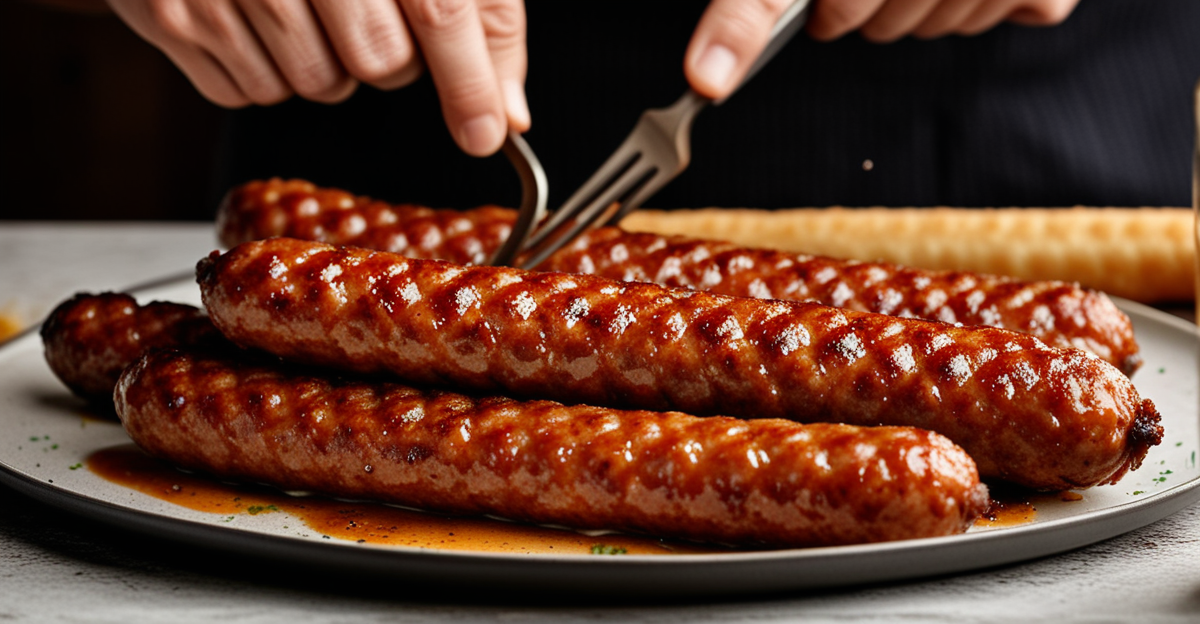Essential Techniques for a Crispy Toad in the Hole
Achieving a crispy toad in the hole hinges primarily on mastering a few key techniques. Firstly, the batter consistency and aeration play a crucial role. A lighter, well-aerated batter produces a puffier, crisper crust. To ensure this, whisk the batter thoroughly, incorporating enough air to create tiny bubbles. The batter should not be too thick; a thinner batter spreads easily and crisps up better in the oven.
Next, focus on maintaining a high oven temperature with proper preheating. The oven, along with the pan, must be sufficiently hot before pouring in the batter. This immediate sizzle drives the batter to rise quickly and form that much-desired crispy edge. Preheating the pan separately inside the oven adds an extra layer of heat transfer, improving the crispiness of the base and sides.
In parallel : What Makes British Cuisine Unique?
The choice of pan material also impacts results. Use a metal pan or a heavy-bottomed ovenproof skillet that retains heat well. Non-stick pans are convenient but can sometimes prevent the crust from crisping evenly. Preparing the sausages properly by lightly frying or pricking them ensures they release juices without making the batter soggy. This step is integral to making your toad in the hole crisp and flavorful.
Together, focusing on batter aeration, oven and pan temperature, and sausage preparation forms the cornerstone of toad in the hole tips that lead to a perfect, crispy finish every time.
In the same genre : What are the secrets to making a fluffy Yorkshire pudding?
Step-by-Step Guide for Achieving the Perfect Crisp
Mastering making toad in the hole crispy starts with preparing the batter correctly. To ensure an optimal rise and crunch, the batter should be smooth and well-aerated. Whisk the batter vigorously to incorporate air bubbles, which contribute to a lighter texture and help the batter puff up evenly in the oven. Use a ratio of about equal parts flour and liquid, typically milk and eggs, to create a pourable but not runny consistency. This balance is key to achieving a crispy toad in the hole crust without it becoming soggy or dense.
Preheating is another critical step in any toad in the hole recipe. Both the oven and the pan must reach a high temperature before introducing the batter and sausages. Place the pan inside the oven during preheating for at least 10 minutes until it becomes very hot. Pouring the batter into a heated pan produces an immediate sizzle, which promotes rapid rising and crisping. This sizzle sets the edges firmly and prevents the batter from absorbing excess fat or moisture, essential for a crisp finish.
Selecting and preparing sausages properly also impacts how crispy your toad in the hole turns out. Choose sausages with a good fat content, which helps create flavor and moistness without sogginess. Lightly frying or pricking the sausages before baking releases some fat and prevents bursting during cooking. This step allows the juices to integrate subtly with the batter, enhancing flavor while maintaining a firm structure. Adding sausages to the pan before pouring the batter ensures they are evenly spaced and cook thoroughly for perfect texture.
By carefully following these steps—batter preparation, preheating strategy, and sausage selection—you maximize your chances of producing a perfectly crispy toad in the hole every time.
Essential Techniques for a Crispy Toad in the Hole
Achieving a crispy toad in the hole starts with perfecting the batter’s texture. The key lies in batter consistency and aeration. For the best results, use a batter that is fluid enough to spread quickly but thick enough to hold shape, ensuring a crisp crust rather than a soggy base. Whisking the batter thoroughly incorporates air, which creates tiny bubbles that expand during cooking, giving the batter its distinctive lightness and crunch. This is one of the most crucial toad in the hole tips for crispiness.
Another vital factor is reaching and maintaining a high oven temperature coupled with correct preheating. The oven must be fully heated before the batter enters, ideally to around 220°C (425°F) or higher. A preheated pan is equally important; placing the pan into the hot oven ensures it absorbs enough heat to instantly sizzle the batter, helping it rise and develop a golden, crispy edge. Pouring batter into a cold or lukewarm pan results in poor crisping and a dense texture. These steps collectively answer the question: How to make toad in the hole crispy? The sizzling effect locks in a dry, crisp surface while enabling the inside to stay light.
Choosing the right pan material plays an understated but influential role. Heavy-duty metal pans or cast iron skillets retain and distribute heat evenly, essential for that all-over crispness. In contrast, glass or thin, lightweight pans tend to lose heat quickly, which can cause uneven cooking and sogginess. Additionally, sausage preparation affects the batter’s final texture. Sausages with a moderate fat content that are pricked or lightly fried first release flavors and fat gradually without letting moisture seep into the batter prematurely. This technique ensures sausages remain juicy while the batter crisps around them, hitting all the goals of toad in the hole tips for texture and flavor synergy.
Combining these methods—batter aeration, high heat with proper preheating, and thoughtful pan and sausage choices—lays the foundation for consistently producing a crispy toad in the hole with irresistible crunch and well-balanced taste.








